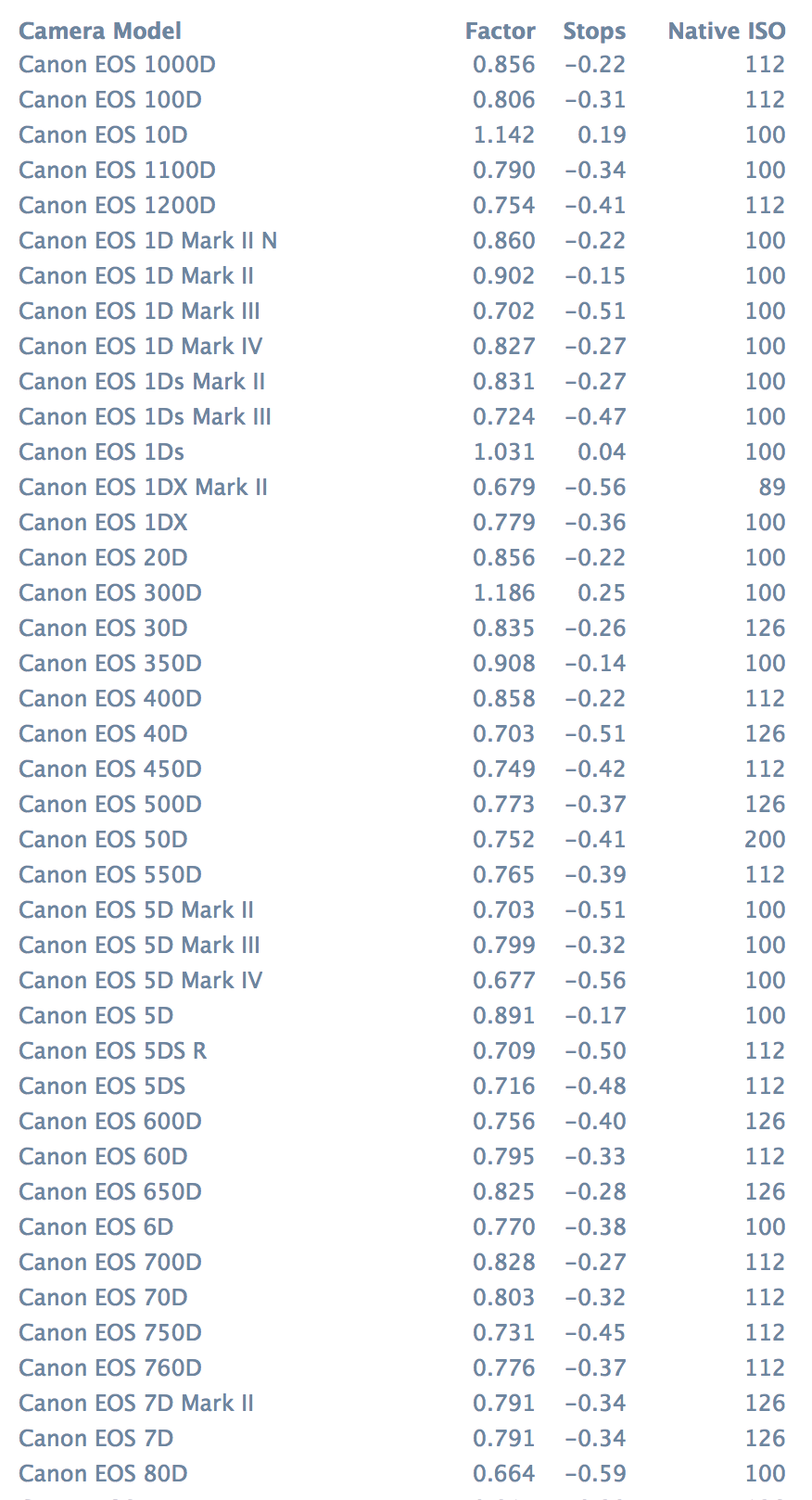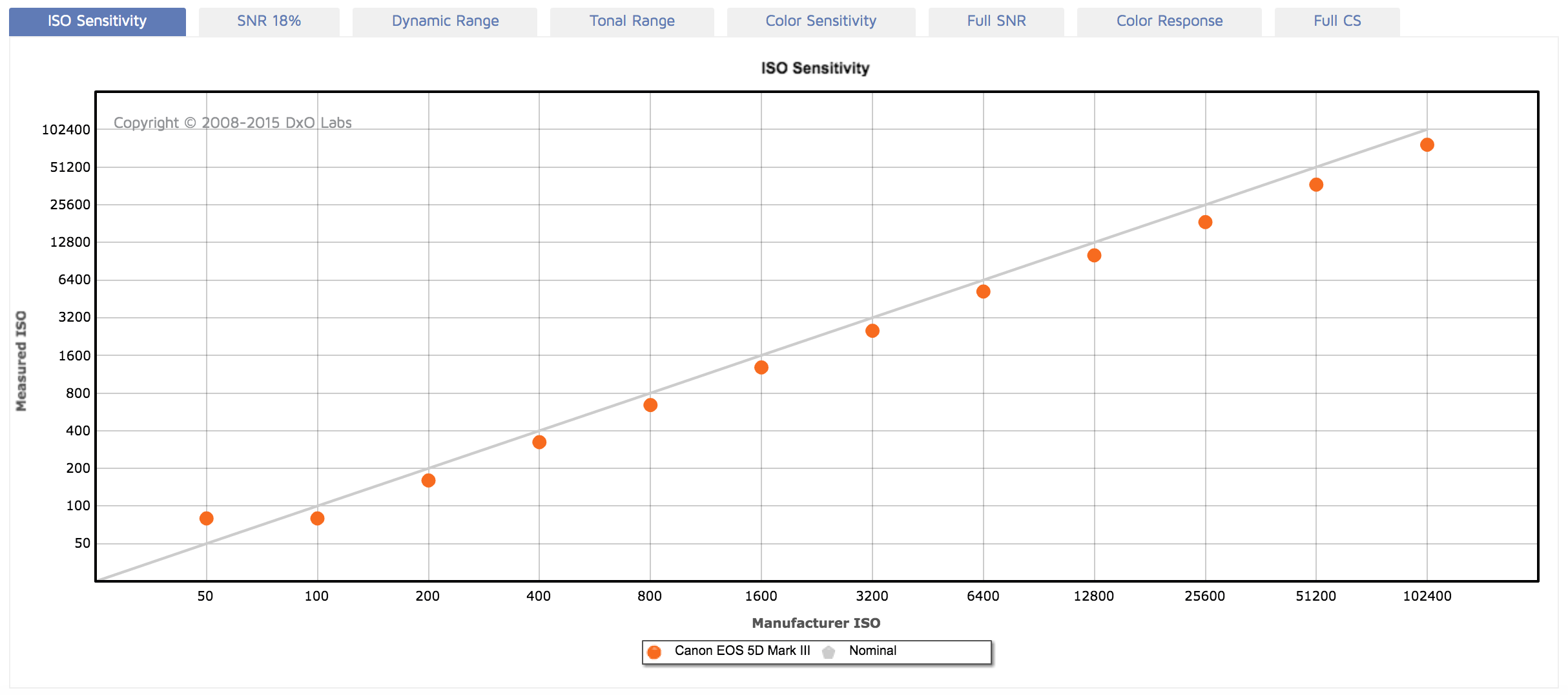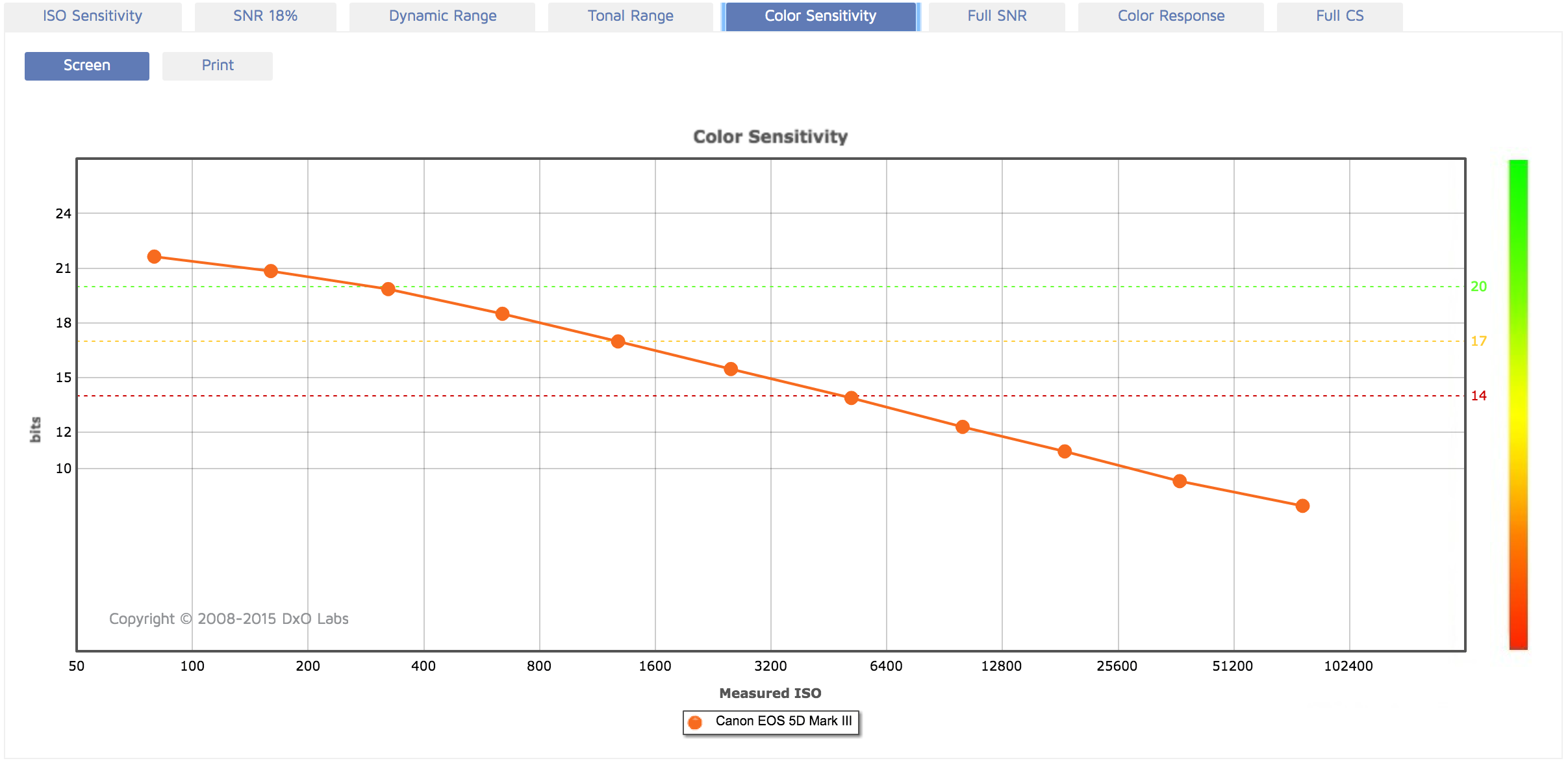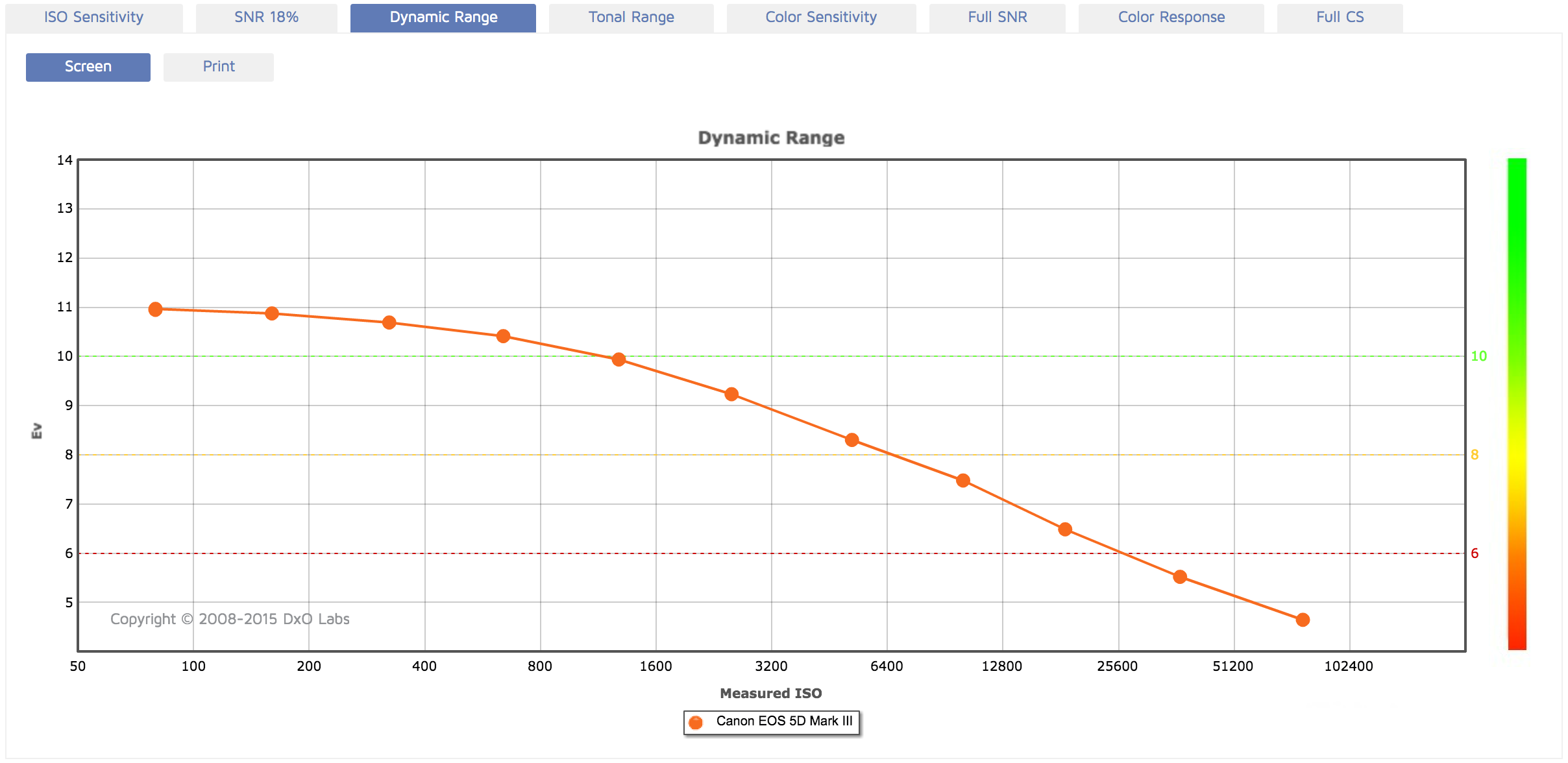金桔
金币
威望
贡献
回帖0
精华
在线时间 小时
|
很好奇国内关于“佳能的最佳ISO是160”、“按ISO160的整数倍曝光画质更佳”以及各种奇怪的原生ISO表的谣言是怎么传出来的,既没有数据来源也没有严谨实验说明,简直误人子弟。
先放结论:相机的最佳ISO是不拓展的ISO最小值,例如5D3的ISO100,而非佳能所谓的ISO160。
中文中的“相机原生ISO”应该译自native ISO,实为CMOS模拟信号不经数字放大所得的原始ISO最小值,可以在各大厂商的技术说明文件里找到(佳能也可以通过MagicLantern破解后在机内查看),实际显示的时候会统一取整。dxomark对其做了整理,截取一部分如下图。

引用链接:DxOMark Derived Measured ISO 可以看到佳能的原生ISO并不是传说中的160。通常可以认为使用不拓展的最低ISO即是原生ISO。关于最佳ISO的辟谣国外有很多,佳能和尼康都不存在某一ISO的整数倍可以获得相对更好画质的情况,无论视频、JPG直出或是RAW都是如此。这里引用一篇
If you've spent any time researching Canon's HD DSLR cameras, you've probably come across discussions of which of the cameras' ISO settings to use and which to avoid. There seems to be a common misconception out there, held by even some very well-regarded experts (The Great Camera Shootout 2010, webisode 2, about 3 minutes in) that the cameras' "native ISO" or "true ISO" settings are the multiples of 160 (ISO 160, ISO, 320, ISO 640, etc), and that the rest of the ISO settings are produced digitally. This is not true. In fact the cameras' native ISO settings (that is, the settings that are derived from analog gain rather than digital exposure compensation) are the multiples of 100 (ISO 100, ISO 200, ISO 400, ISO 800, etc). However, that doesn't necessarily make them better.
链接:Canon HD DSLR “Native ISO” 那些觉得使用某特定数值整数倍画质更好的人纯属心理作用。另外标称值与实际值可能有偏差。下图为DXOmark测得的5D3实际ISO。

ISO50属于拓展,相机会拍摄一张ISO100的照片再降一半曝光量,原理类似向上拓展,拍摄的RAW数据等同ISO100。


在提升ISO的同时,动态范围和色彩灵敏度都在“稳步下降”。对5D3而言,最佳ISO即为100。
数据来源:Canon EOS 5D Mark III : Measurements | DxOMark |
|
 /3
/3 